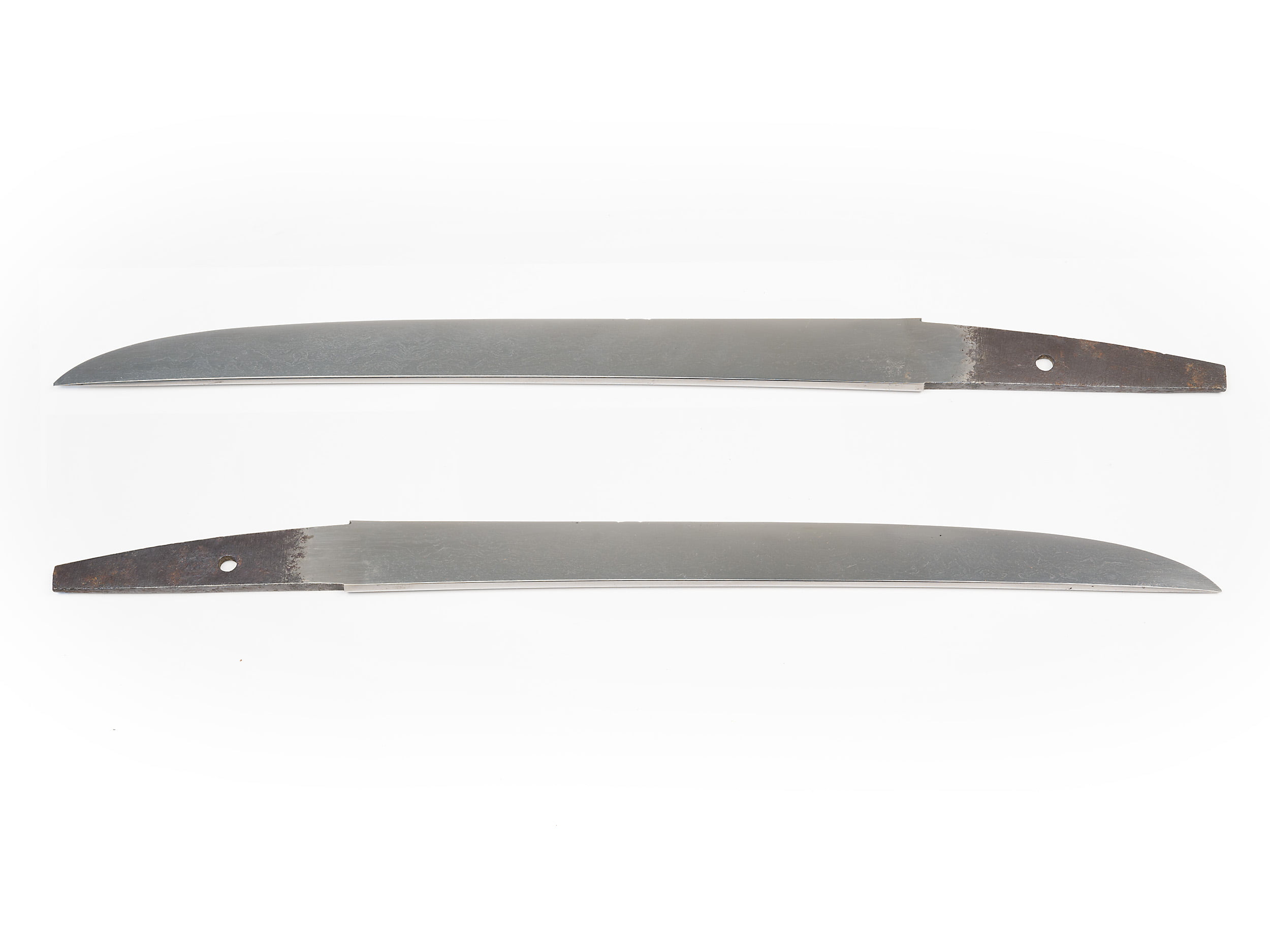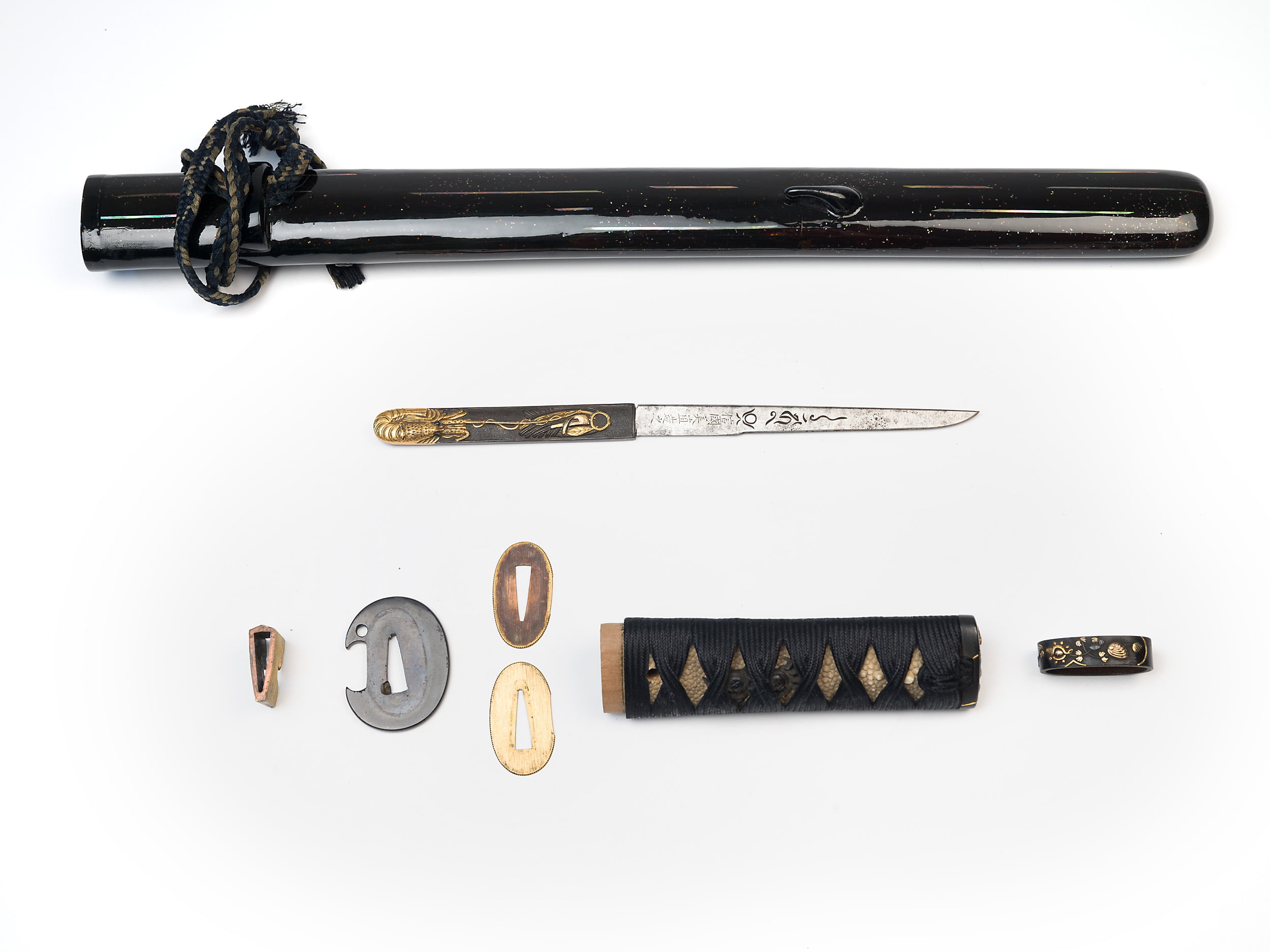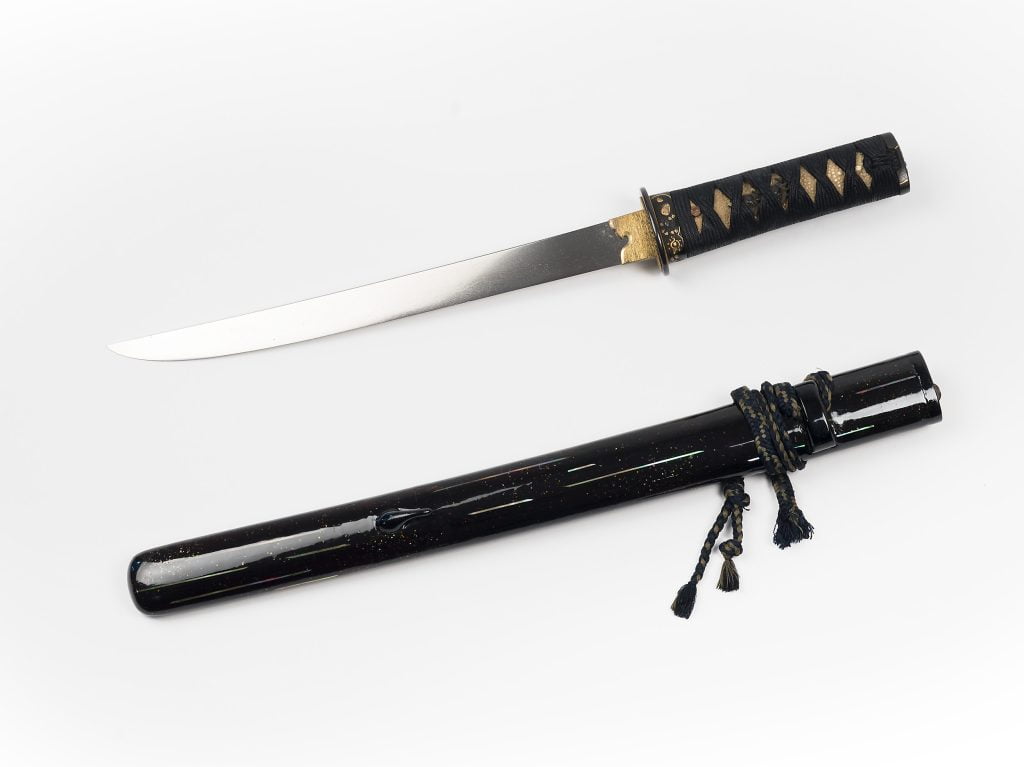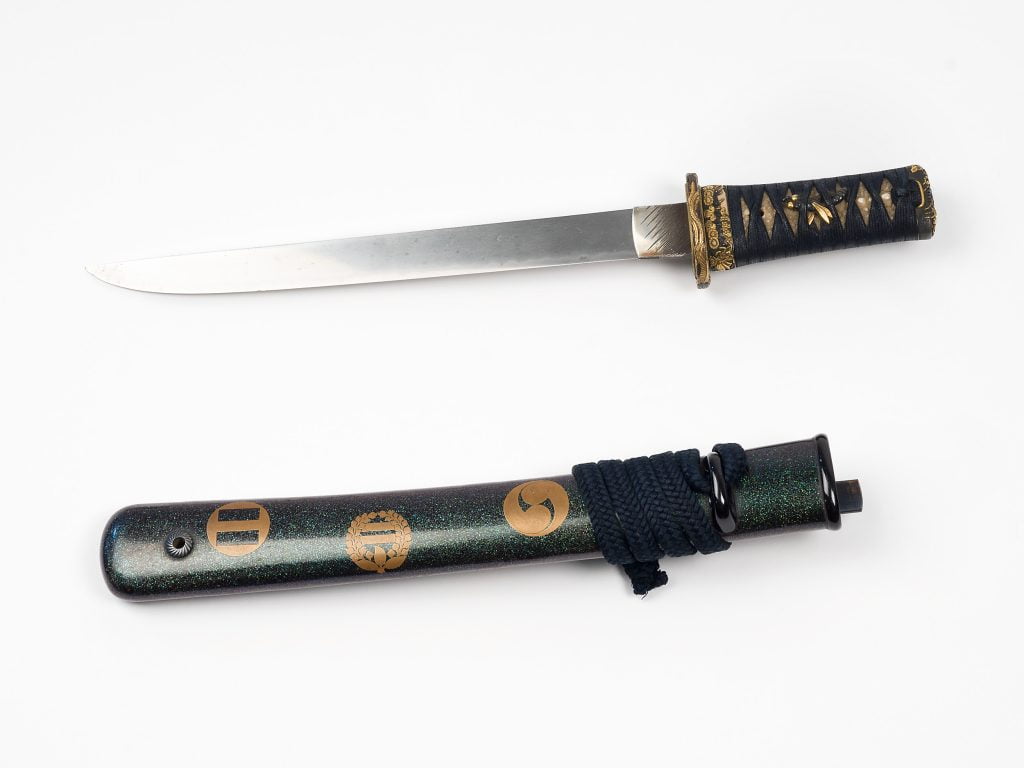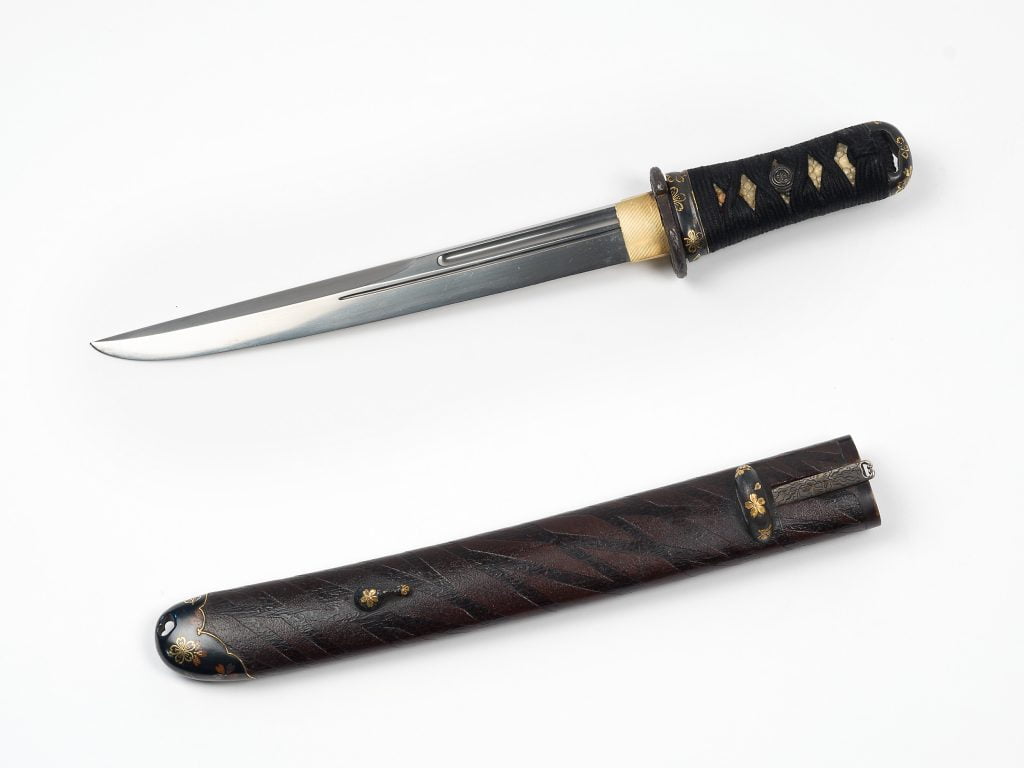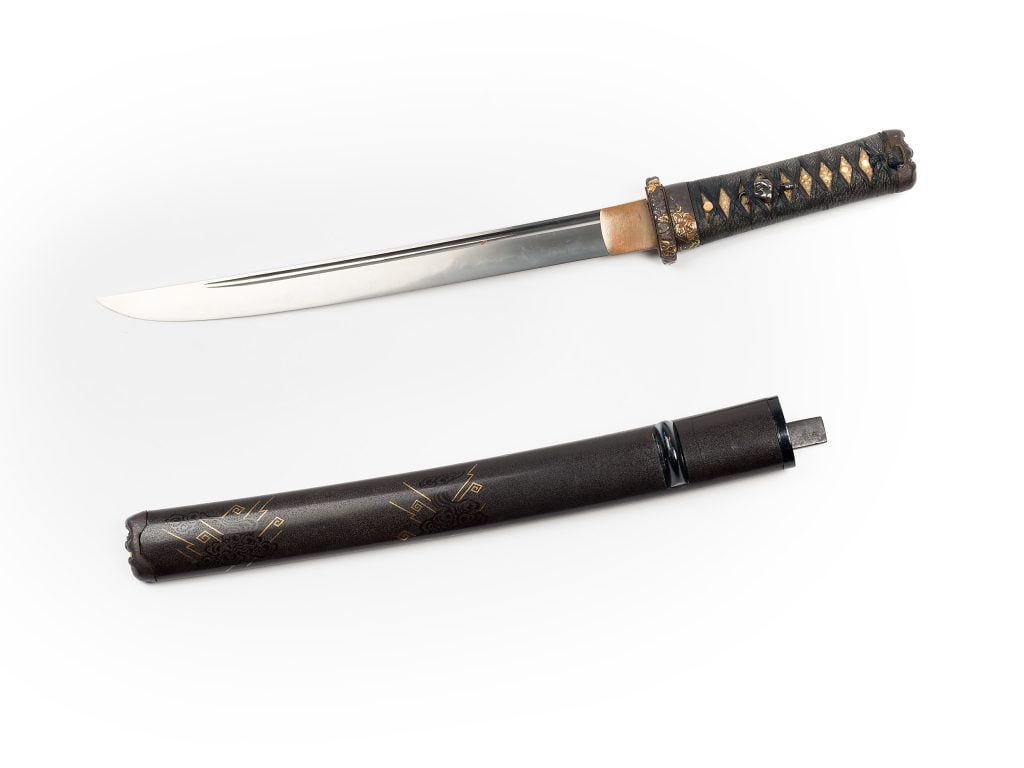Japanese master
A Koto Tanto in Koshirae
This Japanese tanto features a blade length (nagasa) of 275 mm (overall length 55 cm) with an ohira-tsukuri shape, torii sori bend, and shinno-mune back. The temper line (boshi & kissaki) is not identifiable, and the temper pattern (hamon) is not visible. The hada pattern (jihada) is itame, very clearly pronounced. The blade dates to the Koto period, specifically the 12th/13th century Kamakura era and is in very good condition.
The tang (nakago) has a kiri tip and kiri yasurime file marks, with one mekugi-ana (peg hole). The signature (mei) is questionable.
The handle (tsuka) is made of samegawa (rayskin) on wood, wrapped in black silk. The menuki are a pair of crabs in iron. The tsuba is polished shakudo with one ana. The fuchi-kashira are shakudo, partly fine nanako, with algae branches and shells in gold. The blade collar (habaki) is gold-plated copper with a bizarre shape, and there are two gold-plated copper washers (seppa).
The kozuka has a blade with inscription and boushi, back with yakiba. The handle is shakudo nanakoji with a gold-plated lobster.
This elegant tanto has fine koshirae and an extremely beautifully grained, shortened blade. It originates from the Albert Polster Collection.
